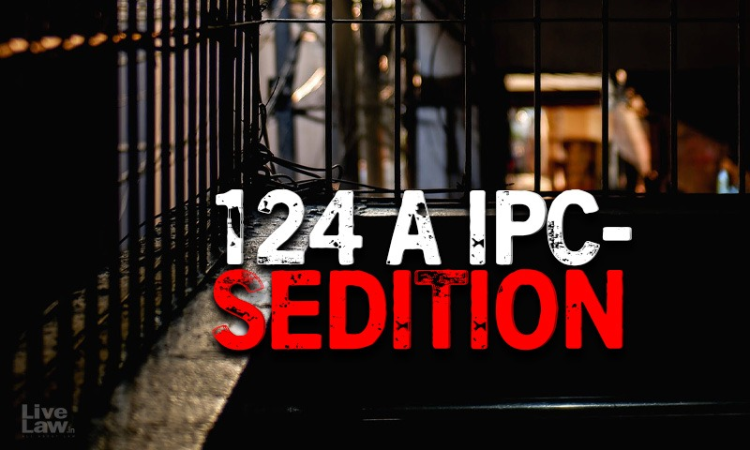Section 124A: Journey Of Sedition Law So Far
Akash Yadav
24 May 2022 9:44 AM IST

Section 124A. Sedition definition
Whoever, by words, either spoken or written, or by signs, or by visible representation, or otherwise, brings or attempts to bring into hatred or contempt, or excites or attempts to excite disaffection towards, the Government established by law in India, shall be punished with imprisonment for life, to which fine may be added, or with imprisonment which may extend to three years, to which fine may be added, or with fine.
Sedition is punishable under Section 124A of the Indian Penal Code. Under the British Raj, the Indian Penal Code was enacted in 1860. Throughout British rule, this clause was used to persecute national independence activists such as Lokmanya Tilak and Mahatma Gandhi, both of whom were found guilty and imprisoned. The clause drew criticism in independent India as well for impeding the right to free expression.
1891
Queen v. Jogendra Chandra Bose (1891)
The first trial for sedition was held in the Bangabasi case of Queen v. Jogendra Chandra Bose. The proprietor, editor, manager, and printer of Bangobasi were all charged by the government with sedition under Section 124A before the Calcutta High Court as a result of the publication of the offending articles. The jury notified the court that it was unable to return a unanimous decision after examining the charge and the summation. Justice Petheram would accept nothing other than a unanimous verdict and ordered a retrial before a new jury at a later date. The retrial was never held because the accused made an apology for the articles, which resulted in the prosecution being dropped.
1897
The Queen-Empress v. Bal Gangadhar Tilak ( 1897)
Bal Gangadhar Tilak, an advocate, was prosecuted with sedition twice. First, in 1897, his comments inspired others to spread violence against Britishers, resulting in the deaths of two British officers. Then, in 1990, he authored an article in his publication 'Kesari' about the Maratha Warrior Shivaji that the authorities deemed seditious. This case provided an interpretation of 'Disaffection.'
Tilak was convicted with a 7:2 majority by a jury of 7 Anglo-Indians and 2 Indians and sentenced to 6 years in prison and a ₹1,000 fine.
1958
Ram Nandan v. State of U.P (1958)
Ram Nandan v. State of U.P. was the first case to address the constitutionality of Section 124-A. The Allahabad High Court ruled that Section 124-A of the IPC is unconstitutional because it violates Article 19(1)(a) of the Constitution. 124-A was said to restrict freedom of speech.
1962
Kedar Nath Singh v. Bihar State (1962)
The decision in Ram Nandan v. State of U.P. (1958) was overturned in Kedarnath Das v. State of Bihar. In this instance, the court ruled that acts having the intent or potential to cause disruption or disturbance of law and order, or the instigation of violence, should be prohibited under this clause. The court ruled that criticism of the government cannot be considered sedition unless it is coupled with encouragement or call to violence. However, if this section is applied arbitrarily, Article 19 is violated.
1973
During the term of Prime Minister Indira Gandhi in 1973, sedition was made a cognizable offence in India for the first time in history, allowing for arrest without a warrant.
2016
Kanhaiya Kumar v. The State of Delhi (2016)
The Delhi High Court stated that, while exercising the right to free speech and expression under Article 19 (1) (a) of the Constitution, one must keep in mind that Part IV, Article 51A of the Constitution establishes the Fundamental Duties of every citizen, which are the other side of the same coin. The aforementioned judicial decisions have been discussed in order to determine what constitutes seditious acts. In light of this, it could be claimed that unless the words or actions in question do not endanger the security of the State or the public, or cause any serious public disorder, the act does not fall under the purview of section 124A of the IPC.
2021
On July 15, 2021, Chief Justice of India N.V. Ramana called attention to the fact that the rate of conviction for sedition is relatively low and that the governmental powers have abused this statute. Some critics of the law go even further, arguing that the purpose of the law is not to convict the accused but to harass and silence critics of the government through a lengthy procedure.
11th May 2022
This law has been put on temporary hold by the Supreme Court of India due to re-examination.The Supreme Court has barred the state and central governments from bringing sedition charges against anyone under Section 124A of the Indian Penal Code.
The order will remain in effect until the Centre reviews the British-era law. It stated that no new FIRs will be filed, no investigations will be conducted, and no coercive measures will be taken under sedition until the law is reviewed. "All pending trials, appeals, or actions relating to charges established under this section would be placed in abeyance," stated a three-judge bench led by Chief Justice of India NV Ramana in a brief order.
The author is a student at RMLNLU. Veiws are personal


